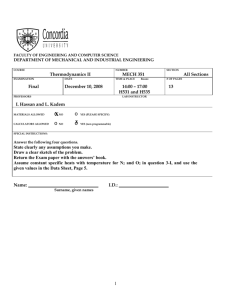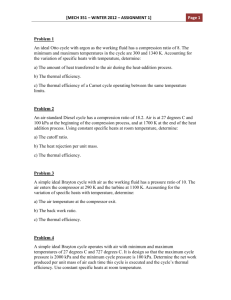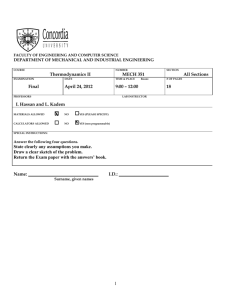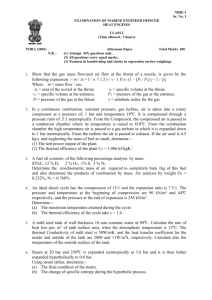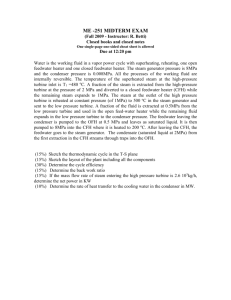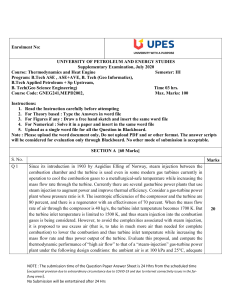Thermodynamics II Midterm Exam - Rankine & Brayton Cycles
advertisement
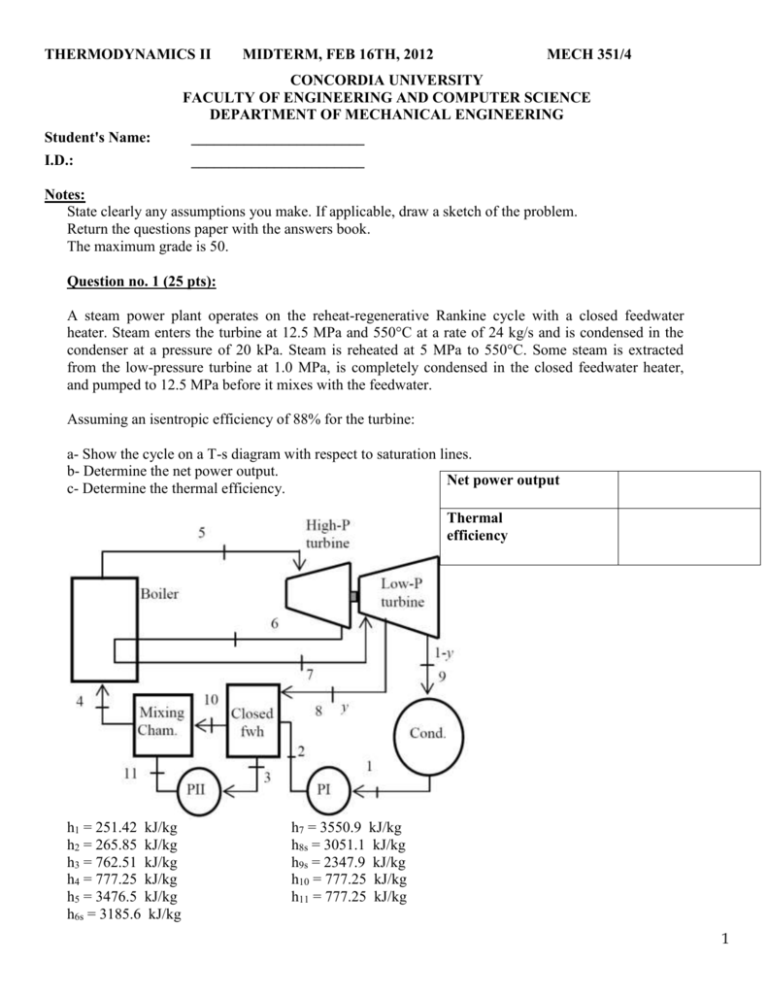
THERMODYNAMICS II MIDTERM, FEB 16TH, 2012 MECH 351/4 CONCORDIA UNIVERSITY FACULTY OF ENGINEERING AND COMPUTER SCIENCE DEPARTMENT OF MECHANICAL ENGINEERING Student's Name: I.D.: _______________________ _______________________ Notes: State clearly any assumptions you make. If applicable, draw a sketch of the problem. Return the questions paper with the answers book. The maximum grade is 50. Question no. 1 (25 pts): A steam power plant operates on the reheat-regenerative Rankine cycle with a closed feedwater heater. Steam enters the turbine at 12.5 MPa and 550°C at a rate of 24 kg/s and is condensed in the condenser at a pressure of 20 kPa. Steam is reheated at 5 MPa to 550°C. Some steam is extracted from the low-pressure turbine at 1.0 MPa, is completely condensed in the closed feedwater heater, and pumped to 12.5 MPa before it mixes with the feedwater. Assuming an isentropic efficiency of 88% for the turbine: a- Show the cycle on a T-s diagram with respect to saturation lines. b- Determine the net power output. Net power output c- Determine the thermal efficiency. Thermal efficiency h1 = 251.42 kJ/kg h2 = 265.85 kJ/kg h3 = 762.51 kJ/kg h4 = 777.25 kJ/kg h5 = 3476.5 kJ/kg h6s = 3185.6 kJ/kg h7 = 3550.9 kJ/kg h8s = 3051.1 kJ/kg h9s = 2347.9 kJ/kg h10 = 777.25 kJ/kg h11 = 777.25 kJ/kg 1 THERMODYNAMICS II MIDTERM, FEB 16TH, 2012 MECH 351/4 Question no. 2 (25 pts): a- For fixed maximum and minimum temperatures, what is the effect of the pressure ratio on the thermal efficiency, and the net work output of a simple Brayton cycle. Support your answer by sketches, e.g., on a T-s diagram. b- A gas-turbine power plant operates on the simple Brayton cycle with air as the working fluid and delivers 15 MW of power. The minimum and maximum temperatures in the cycle are 310 and 900 K, and the pressure of air at the compressor exits 8 times the value at the compressor inlet. Assuming an adiabatic efficiency of 80 percent for the compressor and 86 percent for the turbine, determine: (a) the mass flow rate of air through the cycle, and (b) the thermal efficiency of the cycle. Consider constant specific heats (Cp = 1.005 kJ/kg.K and Cv = 0.718 kJ/kg.K). Mass flow rate Thermal efficiency T2 v1 T1 s cte v2 k 1 T2 P2 T1 s cte P1 P2 v 1 P1 s cte v2 C k p Cv k 1 k k 2
